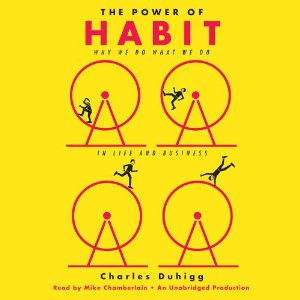 What’s the book? The Power of Habit: Why We Do What We Do in Life and Business by Charles Duhigg
What’s the book? The Power of Habit: Why We Do What We Do in Life and Business by Charles Duhigg
How did I “read” this book? Audio book.
Why did I choose to read it? / What made me want to read it? Well, for one thing, it has a catchy title. And, two, I figured I’d stop reading “life hack” articles where the author just distills a topic from a book like this, and just start reading a book that was written more intentionally. And also, I’m interested in how people work. How people come to their decisions. How people think and rationalize.
An aside: Answering this question reminds me of another book i’m interested in (and may review later) is The Myth of the Rational Voter. And it touches on the concept of “rational irrationality.” You should definitely read more about it (and then tell me about it).
What did I like about this book? I like that this book emphasized our ability as humans to change. We aren’t born with all of our skill sets, and even later in life we can change our habits. Making changes in our lives isn’t a huge deal. We can change our habits by making very, extremely, small steps. It’s about the small wins that gives us the positive feedback that gives use the momentum to make another small win. And after the series of small wins snowballs into a larger win overtime, you’ll notice that you’ve made a change.
And I liked that the author gave several anecdotes that illustrated his point. He presented the book in a very entertaining way. Additionally, since I “read” this as an audio book, the narrator of book was very good as well. He refrained from keeping a monotone voice, making sure to place emphasis on words as needed. I appreciated this.
What was my favorite quote or story? The author talks about habits not just as an individual concept but also as a social or organizational concept. The most memorable story in the book was about how there was a period in the US where there was a very high rate of still-born babies. This was caused by mothers who were malnourished. The way to fix that was to make sure all women of childbearing age were aware and educated in the importance of nutrition. This starts with teenage girls. The researchers went to the high schools to implement a nutrition curriculum. But, especially in rural areas, the high teachers were not well equipped to do that. So in order to make sure that teachers had the background to teach nutrition, when those (future) teachers were still high school, the biology was taught to them. And that’s how biology became part of the high school curriculum. And that’s how researchers (and team) decreased the rate of still-born babies by more than 60%.
Would I recommend this book? Yes. Go read it. The book had so many more good stories and interesting points than what I mentioned here.
